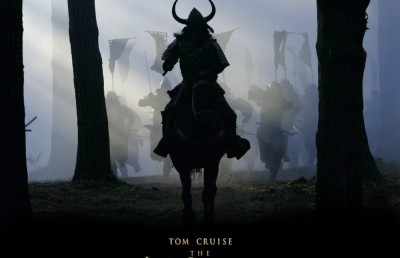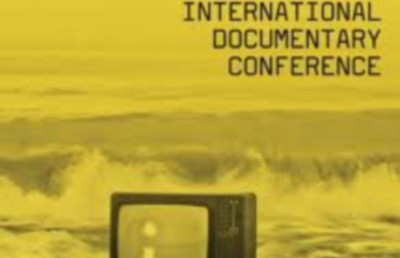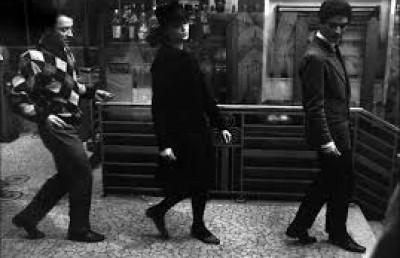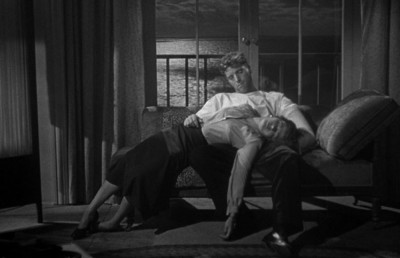The Art of Walking Backwards
How to Make a Documentary for NZ$12,000
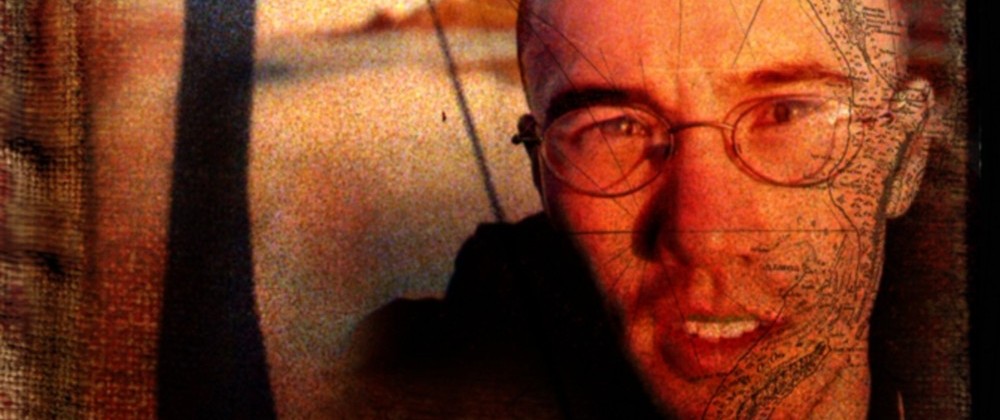
A Mäori proverb says you spend your life walking backwards because you can see the past but not the future—that’s why we trip. The journey to make Behaviours of the Backpacker is full of stumbling blocks—especially on such a small budget. But the luxury of time to improvise and develop relationships that cannot be purchased outweighs the setbacks.
The documentary tells the stories of backpackers, tour operators, organic farmers and Mäori communities, all walking backwards to find the way home.
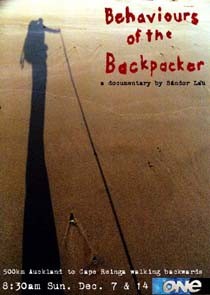
WALKING BACKWARDS
I’m walking alone 500km from New Zealand’s least spiritual place, Auckland, to it’s most spiritual one, Cape Reinga, to make my documentary, Behaviours of the Backpacker. Cape Reinga is the top of New Zealand’s North Island, also called Te Ika a Maui. It’s Aotearoa’s spiritual tip, where the wairua (spirits) of Mäori travel after death to leap off and return to their ancestral homeland, Hawaiki.
I walk into one of the country’s only Mäori backpackers after lugging my pack full of camera gear 40km, and I’d like to sleep for the next 14 hours. But when I meet the owner, Pete Kitchen, I know I must interview this man NOW!
Pete explains a Mäori proverb, which says you spend your life walking backwards:
You can see where you’ve been, but you don’t know where you’re going. If you’re walking forward, you know where you’re going, you wouldn’t trip over anything, but we do. So there’s your story of your life.
It’s a more developed version of hindsight is twenty-twenty. And the man met me only a little while ago, but he’s sorted out the past and the future of my film before it’s even finished.
IN THE BEGINNING
With the proverb in mind, I should go back a little way. I think I can safely say I am New Zealand’s only Chinese/Hungarian-American. I came to the University of Auckland in 2000 on a US Fulbright scholarship, and had the opportunity to attend film school—something out of financial reach in the land of opportunity.
To make the documentary, I received NZ$12,000 (A$10,000, US$8,160) of grant money from Creative New Zealand and Fulbright New Zealand. Which came with neither strings nor lifelines attached, allowing me to produce the film myself. The grant basically paid for living costs on the road, and absolutely essential production expenses.
Another aspect of the proverb is going back to the beginning to get to the future. So I thought back to my hometown and the video store where I worked. I could only watch the PG movies there because of the kids in the store, so I developed an interest in Hollywood films of the 1930s and 40s, which found new creative directions because of the censorship restraints of the Hayes Code and the National Legion of Decency.
Looking back to those films, I knew I would have to turn my weakness into strength. An average hour of Australian documentary costs NZ$238,00 1 (A$206,000, US$156,000) and an hour of Discovery Channel, NZ$1.5million 2 (A$1.3million, US$1million), compared with a standard documentary budget of NZ$140,000 (A$121,000, US$92,000) in New Zealand. So the only thing for me to do was make a documentary with NZ$12,000 that could not possibly be made for a million dollars.
With a backpack full of three changes of underwear, a box of DV tapes, and a Sony PD150 digital camera, I set out to do what big budget productions rarely have the luxury of doing—improvising. The next two months I spent walking, sometimes forty km a day, convincing other people on journeys to share with me their visions, dreams and sorrows.
FAIRY TALE
I wouldn’t say I’m not fond of the city. It’s not like cities are breeding grounds for all the world’s greed and unhappiness and bad behaviour. They’ve never been able to prove that viral marketing, multi-tasking and retail therapy actually give you cancer; and someone has to drive the cars to burn the gas to start the war to keep the gas prices down. It’s not like the market can do everything for us. —voiceover leaving Auckland.
I always conceived Behaviours of the Backpacker as a classical fairy tale or epic. A young man undertakes a journey despite the warnings of those around him because the situation as it is cannot be allowed to continue. Maybe he has to go fight the monster (Beowulf), discover knowledge (Maui) or return home (Mahabaratha, Odyssey). Maybe all three (Behaviours of the Backpacker. Anyone familiar with the practices of colonialism or the WTO knows that monsters have many faces.
The journey’s object becomes a McGuffin—a device to drive the story and give the protagonist an objective. In the end, maybe the McGuffin is a genuine prize, Odysseus reclaiming the throne of Ithaca, Maui gaining the secret of fire, or maybe it’s just a Maltese Falcon. Whatever the conclusion, the journey is the most important end result. And what makes the journey are the characters the traveler meets along the way.
DRAMATIS PERSONAE
I meet a Tasmanian hippy, Bel, who lives in her van with her dog and hasn’t had a shower in a week. And it’s all on tape because our interview started ten minutes after our first meeting. She’s here to test her theory that the universe provides everything you need. Which I think is horseshit because when she runs out of money she gets on her cellphone to her parents. But I’m walking backwards, so the horseshit turns to prophecy, because I need her for my movie and she drops out of the sky straight into my frame. And in the million dollar alternative universe with the lighting truck and production design, she would have vanished into smoke.
Another founding premise for Behaviours of the Backpacker was that war-torn countries produce refugees, impoverished countries produce emigrants, and decadent countries produce backpackers.
Dror is an Israeli stoner who smokes through his entire interview. We’re talking about backpacking and he tells me, ‘Outcasts, you meet a lot of those…you can see that in their own country these people are lost, they just don’t fit’. And I wonder if he’s only talking about other backpackers. What began as active intention has become a kind of natural selection because everyone I interview is on their own journey to fight the monster, discover the knowledge and find the way home. For many, though, finding home means leaving it. This is the kind of middle-class homelessness I wanted to explore, the kind that doesn’t come with a press kit, doesn’t make appointments, and doesn’t come on Friends.
THE ENLIGHTENMENT FACTORY
The average American spends 1,460 hours a year, (or the equivalent of two consecutive months at 24 hours a day) watching television. 3 Average Kiwis and Aussies spend a mere 1,000 hours (42 days) a year in televisiual training 4
Whatever the per hour cost, those sponsoring the programming are obviously not doing so out of good will. McDonald’s spends an annual advertising budget of US$1.2billion 5 (roughly the gdp of Djibouti, Vanuatu or Bhutan) 6 . And it’s no secret that in addition to clearly delineated advertising; corporations also directly lobby program makers to write their products into their show 7
Which is perhaps the greatest evidence of television’s effectiveness as a behaviour management device. And it’s no surprise subjects are chosen to go on television for their capacity to replicate the ideas they’ve been trained on for 1000 hours a year since birth.
Which is exactly why for Behaviours of the Backpacker, I chose subjects like Bel and Dror, and Richard, a Frenchman who says, ‘All the things they say about France, it’s all pretty much true because we’re all just big fuckers’. Calvin Kan, a Chinese-American I meet in the Bay of Islands says, ‘When I come here, I’m American. I’m from Los Angeles, California; I’m American. But at home I’m Asian’. And I have bad dreams of the million dollar alternative universe with him telling how he likes McDonald’s more than noodles.
TANGATA WHENUA
Ron, a twice-divorced middle-aged American backpacker looking for a new life tells me about his love of Herman Melville, and his fantasies of finding a Polynesian paradise here in New Zealand.
Willie, a Mäori carver, tells me, ‘Some of them, they have this idea that we are living back in the eighteenth century and we should all be sitting around a fire cooking…“Why aren’t you carving?” Hang on, you know, it’s the year 2002’.
The fact that television highlights Mäori achievements in the fields of rugby, crime, prison, health problems, and cultural performances comes as no surprise, even at the NZ $140,000/hour figure. A positive image is always available for a certain price, just as a negative one can be softened for a certain price. The average Mäori income of NZ$14,800 is NZ$4000 under the national average 8 Media spokespeople and advertisers do not work for free.
Behaviours of the Backpacker is a story about exile, and while the middle-class backpackers of the documentary may seem to have very little in common with the Mäori of Northland, they are all people who cannot be at home in their own countries. To highlight the story of colonization and dispossession of Mäori, I chose the story of Ngawha, sacred springs where the NZ government is building a prison.
Riana, a kaitiaki (guardian) of the springs, told me,
‘Our tupuna (ancestor), Kariariki, found the springs. From Kariariki to myself, it’s sixteen generations, you see. One of the kaupapa, kaupapa is the purpose, of the land is that it’s a place of healing … when the waters are not well, we are not well. A prison here, that will interfere with the flows of the waters … which means that it will interfere basically with us. ‘
While it is standard practice for media to highlight Mäori as spiritual people with strong connections to the land, it’s almost against the rules to put that spirituality and connection with the land into an immediate and political context.
MY JOURNEY
I am not Mäori, which puts me in a difficult position making a film dealing with issues of Mäori land rights and spirituality. Certainly much of the problem with current representation of Mäori comes from outsiders telling those stories.
I have attempted to allow the Mäori subjects of my film to tell their own stories in their own words, without voiceover interference to ‘explain’ what they are talking about, as is standard journalistic practice. In my experience as a television journalist, it is not the direct intention of corporate documentarians and journalists to distort their representation of their subjects, but the overwhelming result is that it happens anyway, often as a result of time constraints. Once again, I had a sufficient amount of the one thing large and expensive broadcasts do not—time.
My primary strategy, however, in dealing with Mäori subject matter as a non-Mäori, was my same strategy for every other aspect of the film—to be open about it.
In addition to saving budget by being my own frontman and narrator, I wanted to be open about where I was coming from and whose opinions were shaping the film. And I feel this payed off in a number of ways.
Since it was just me shooting, I was able to spend time, usually days, building personal relationships with my subjects, without worrying about the crew or the schedule or the budget. And since it was just me walking, I think I gained the trust of many people who know (either intuitively or consciously) that corporate media routinely misrepresent them.
In the end, Behaviours of the Backpacker is my story about my ideas, my opinions and my journey. So being a character in it only made sense—as a show of respect to viewers to be open about its subjectivity, and as a narrative thread tying together all the other stories.
THE HOME STRETCH
I feel the strongest sense of walking backwards, when, after reaching Cape Reinga and finishing one of the finest experiences of my life, I’m condemned to watching 47 hours of field footage and spending months staring at a screen and editing it by myself.
Nearly half of the budget goes towards transcribing the field tapes. In five months of post-production, I am reminded by my school that 1) 47 hours of tape is far too much, 2) spending 5 months editing is against both industry practice and school rules, and 3) I should tone down or remove the Mäori portion of the film dealing with the prison.
I find the music from three main sources: Ralph Bennett, a gypsy singer/songwriter who travels the country in a housetruck; Matthew Brennan, an unemployed art school graduate who has his guitar confiscated while busking a week after we record; and three friends who run a Mäori radio show on the local campus station. I pore over their collection for weeks without finding the right sound and only then does my friend Rerewa, an experienced performer, offer, ‘We could do something for you’. In the end it takes three months, and all the music is a gift—one that could neither be found nor bought with a budget.
DISTRIBUTION
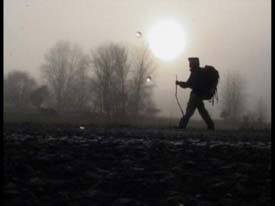
Like meaningful discussions of Mäori land rights, or hippies testing the theory that the universe provides everything you need, a non-commissioned documentary is a rarity in the broadcasting world. And like Mäori land rights and hippies, not always welcome.
My initial approaches to the only two broadcasters of NZ local content were qualified up front with the understanding that if selected (and no guarantees), they would do me a big favor and broadcast my documentary for free! One of the two returned my tape with a ‘not interested’ reply and it took about a week to give up waiting for the other.
After working nearly a year as a reporter at Asia Down Under TV program, an Asian NZ magazine show, I convinced my producer to air it, for which I received enough payment for the purchase and a year’s maintenance of a 1988 Toyota Corolla.
Behaviours of the Backpacker screened in two parts on Asia Down Under, TV1 (TVNZ) in December 2003, and received the show’s highest ratings for that year. An excerpt is online.
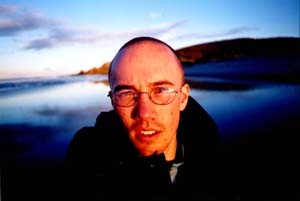
Sándor Lau
Notes
- Australian Film Commission. Accessed 5 April 2004 ↩
- Liang Yu, ‘Discovery may channel-hop’, Shanghai Star 22 March 2001. ↩
- Michael Moore, Stupid White Men, Penguin, London, 2002 p. 86. ↩
- Statistics New Zealand, www.stats.govt.nz, Australian Bureau of Statistics, www.abs.gov.au Accessed 10 February 2004. ↩
- Advertising Educational Foundation, www.aef.com Accessed 10 February 2004. ↩
- quoting the CIA World Fact Book Accessed 10 February 2004. ↩
- Keith Naughton ‘Love is in the air time for sex drug’, New Zealand Herald, 29 January 2004 section C4 Business Herald. ↩
- Statistics New Zealand, www.stats.govt.nz Accessed 10 February 2004. ↩


